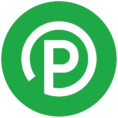Driving growth and customer choice with a multi-solution approach
Background
Asbury Park is a vibrant coastal city of about 15,000 permanent residents located in Monmouth County in central New Jersey. Despite having a footprint of only 1.4 square miles, the city attracts millions of tourists a year thanks to its lively downtown area, a bustling beachfront, and a variety of popular art and concert venues. “New Developments and new events have brought the city back to life, so we’ve experienced a higher demand for parking year after year,” explains James Bonanno, the Director of Transportation for Asbury Park. “One of our main challenges is to keep the parking– especially on our waterfront and downtown areas–moving.”
The city offers 3,000 on-street metered parking spaces, six private parking lots, two municipal parking lots, and one parking lot that is owned by the state of New Jersey but made available for limited use to the City of Asbury Park. To modernize parking payment and to transition away from per-space meters, the city launched its first digital parking app in 2016.
Reducing friction by offering more choice
While Asbury Park found its proprietary parking app was an effective revenue source, a frequent complaint from visitors was that they did not want to download another app just to park. The city came up with a unique solution: instead of pushing people to use their app, they would simply add more parking apps to their system. “People like using certain features, or like using an app they already have,” Bonanno notes. “So, we thought if you can use it in a different city, you should be able to use it here, too.”
The city started by looking for trusted app vendors that were widely used in nearby cities, and added another app to its system in 2019. After coming to the city’s attention, ParkMobile was added as a digital parking choice for Asbury Park customers later the same year. “A lot of neighboring cities were already using ParkMobile and on top of that ParkMobile offered features that people really liked, like parking maps. So it was a no-brainer to add them to our group of apps,” Bonanno reflects on the decision to include ParkMobile in their open market parking program, which now includes four apps.
Contrary to a traditional multi vendor setup, the city’s open market parking model not only offers users multiple apps but also allows app providers to offer their own individual fee structures and features. The multi-solution approach has paid off in a big way–with competition between parking apps driving more innovation, cost savings, and choice for consumers. The city has also benefited significantly from additional digital parking adoption–and mobile payment has steadily become the preferred payment method in Asbury Park. Recent data shows usage of all parking apps continues to grow, with digital payments now making up 75-80% of all monthly transactions.
Simplifying operations and boosting collaboration
To ensure that parking operations would continue to run smoothly and run within their set parameters, Asbury Park decided to only work with established apps on cooperative contracts. Despite some early doubts, the transition from a single app to an open market approach was simple, and Bonanno notes that the process of adding new vendors has become significantly easier with each new app. Additionally, while there was some initial confusion among parkers as to what apps could be used where, the city has since overhauled its signage to include all participating app logos, along with links to a user-friendly website where users can download their preferred app.
When problems do arise, Bonanno explains that ParkMobile and other app providers are often quick to provide solutions independently, giving the transportation team more time to focus on other tasks. For invoicing and other operational tasks, Asbury Park has found that having an open market system has helped boost collaboration between the city and even among the app developers themselves. “We’re very satisfied with how these companies are working, how they’re working together, and how they manage themselves,” Bonanno says. “I spend more time on my meters and kiosk parking– whether it’s maintenance, vandalism, or invoicing– than I spend on all of our apps combined.”
Building a data-driven future
With more development on the horizon, Asbury Park is looking for more ways to maximize their limited space while keeping parking fair and equitable. The city is also considering finding ways to aggregate parking data across their different apps to make more data- driven decisions. “There’s data I’d love to have to help us keep growing on a larger scale,” Bonanno explains, “but even smaller things like knowing how many cars are parked in a zone at a particular time or what areas are busiest at certain types of day would be useful.”
Ultimately, Bonanno believes that while kiosks and meters will remain an important part of their parking infrastructure, digital parking will only continue to grow. After a successful experiment in opening their system to multiple parking solutions, Asbury Park is looking at potentially adding more apps to help ensure their residents, visitors, and businesses stay happy for years to come.

 Get it on Google Play
Get it on Google Play